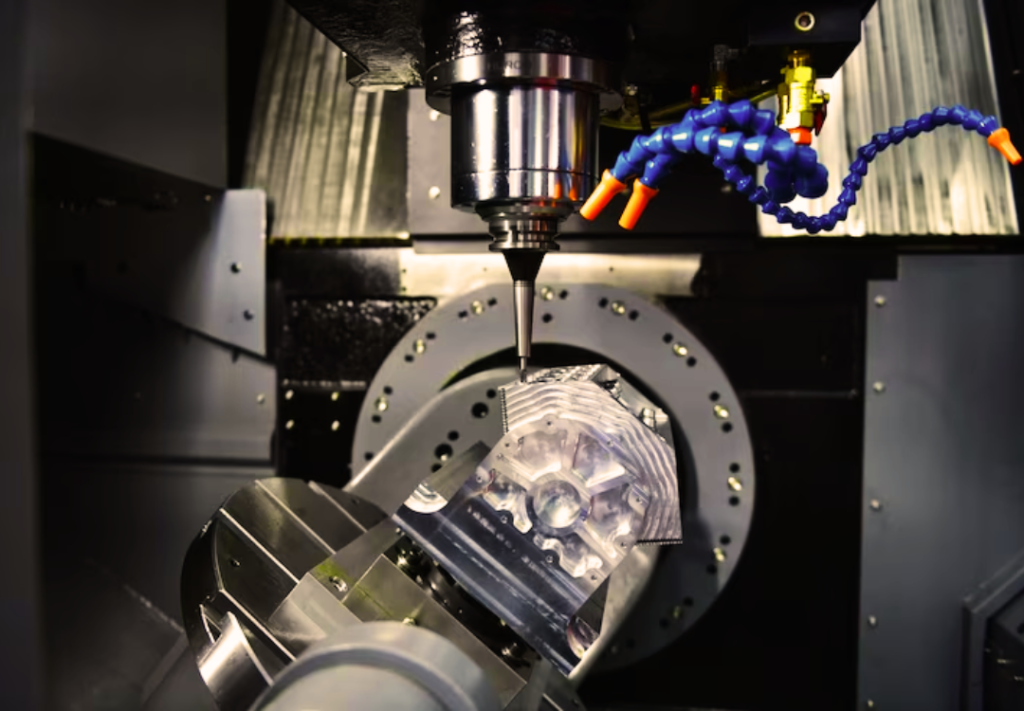
Advanced technologies and robotics have virtually impacted every aspect of our lives, simplifying tasks that require unprecedented levels of precision and accuracy. Whilst increasing productivity, robots have played a key role in off-loading humans from conducting repetitive and arduous tasks.
In total essence, technology has emerged to become an indispensable part of our lives, driving innovation and offering efficiency.
What is CNC Machining?
CNC Machining is a manufacturing technology, which stands for ‘Computer Numerical Control’. It is a powerful way of manufacturing metal and plastic parts and is a suitable method for low and medium volume production. The CNC system is quite similar to dictating a robot where a software is programmed and the machinery automatically carries out the tasks that are required to produce the object.
It is a technique that aims to provide productivity in the manufacturing industry, providing competence with remarkable consistency.

CNC Machining and Robotics Synergy
In the ever-evolving landscape of manufacturing, the convergence of CNC technology and robotics has paved the way for a new era of precision, efficiency, and flexibility. CNC robots are redefining the way industries approach complex tasks and production processes.
The union of CNC technology with robotics has resulted in CNC robots that are intelligent automated systems providing benefits that help in streamlining workflows, from design to execution, reducing human dependency. This leads to reduction in errors whilst managing delicate operations and complex machining tasks.
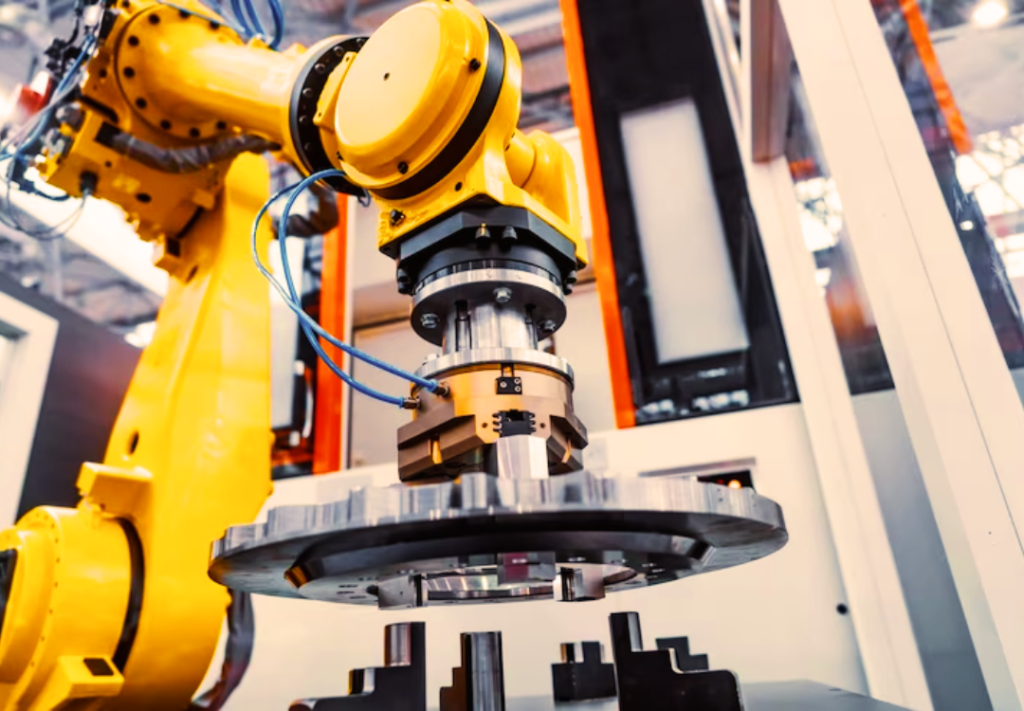
How CNC Machining Enhances the Manufacturing of Robotic Components?
Apart from the economic advantages offered by CNC machining for customised robotic applications, there exist several reasons for opting for this method to fabricate a robot. These encompass the following factors:
Material Variety:
CNC machining can work with a wide range of materials, including metals, plastics, and composites. This versatility allows manufacturers to choose the best material for each specific robotic application, considering factors like strength, weight, and durability. This helps in creating a durable product that has the capability to lift and transfer heavy objects.
Precision and Accuracy:
CNC machining uses computer-controlled tools and processes, resulting in incredibly precise and accurate cuts and shapes. This level of precision is crucial for robotic parts, as even small deviations can impact the overall performance and functionality of the robot. This notes that dimensional accuracy is necessary for high-performing robots and CNC precision machining can produce parts with tight tolerances.
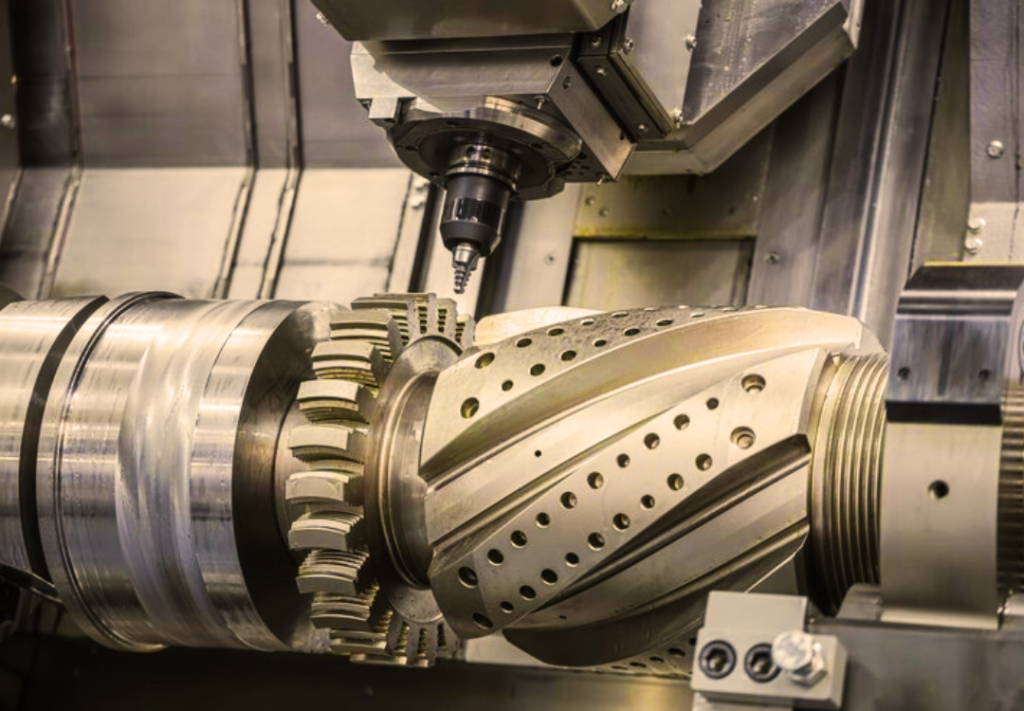
Increased Efficiency and Consistency:
CNC machining is highly automated, reducing the need for manual intervention. This not only speeds up the manufacturing process but also reduces the chances of errors and defects. This machining process also ensures consistent quality across multiple parts. This uniformity is crucial for robotic systems, where all components must work together seamlessly for optimal performance. The technique eventually reduces lead times, giving faster output with rapid iteration and delivery.
Enhanced Surface Finishes:
The interactive robotic parts must have low friction which requires surface roughness for smooth movement .CNC machining offers precise control over various parameters, enabling manufacturers to achieve a wide range of surface finishes on robotic parts. This flexibility, combined with advanced programming and tool management, ensures that the desired surface finish is consistently attained in the manufacturing process.
Precision CNC Machining for Robotic Parts Production
Robotic Arm:
A robotic arm mimics the functions and movements of a human arm. It conducts a wide range of tasks and functions across industries, playing a key role in doing repetitive tasks with high precision. CNC machining offers the precision, customization, and efficiency required for the production of high-quality robotic arms. The manufacturing technique has the ability to create complex geometries and work with various materials, contributing to the functionality and performance of robotic arm systems.
End of Arm Tooling:
The end of the robotic arm, known as the end effector or end of arm tooling, can be equipped with different types of grippers, sensors, cameras, or specialised tools depending on the intended application. End effectors often have intricate and complex geometries to accommodate specific tasks. CNC machining allows for the creation of these complex shapes, such as gripper fingers, tool mounts, or specialised sensors, with minimal limitations.

Custom Fixtures:
Custom jigs and fixtures refer to specialised tools, templates, or devices that are designed to hold, position, or guide robotic components during various stages of the assembly process. They are custom parts that enable robots to perform tasks with high-precision and reliability. Jigs and fixtures can provide additional support or access to hard-to-reach areas, enabling the robot to perform tasks that might be challenging without proper assistance. CNC machining is great for making custom fixtures because it’s fast and works well for one-of-a-kind parts. Fixtures can be easily created from a single piece of material, usually aluminium.
Structural Parts:
The structural components of a robot are the essential building blocks that form its physical framework. These components include the robot’s frame, arms, joints, gears, bearings and other supportive parts. They provide the necessary strength, stability, and support for the robot’s functionality and movement. These structural elements ensure the robot’s integrity and help it perform tasks accurately and safely. Proper design and construction of these components are crucial to ensure the robot’s durability, precision, and overall performance. CNC machining allows for the customisation of structural components, ensuring they meet specific size, shape, and functional requirements whilst meeting complex shapes with ease.
Robotic System Motor Parts:
Robotic system motor components are essential parts of a robot’s mechanical and functional structure that enable its movement, manipulation, and overall operation. Several parts of the motor such as bearings, shafts and enclosures are CNC machined due to the accuracy to create components that can be seamlessly integrated with motor control systems.
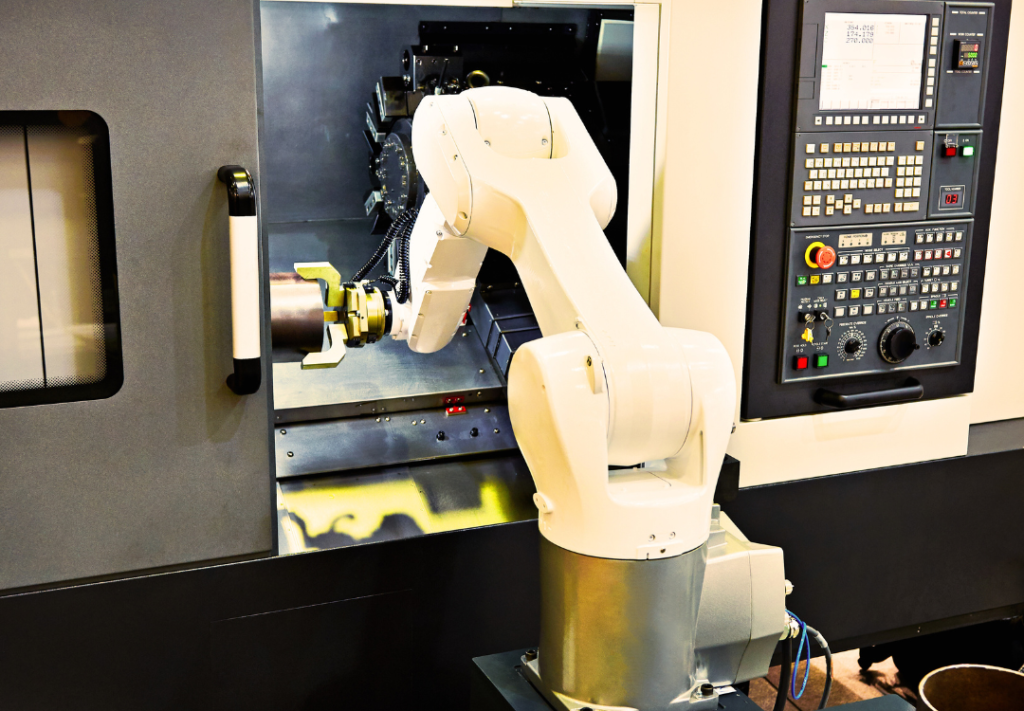
Key Differences between CNC Machines and CNC Robotics:
In terms of quality and performance, the technologies have certain differences that determine their various uses and features.
Accuracy:
CNC machines offer accuracy that go down to fractions of a micron whereas CNC robots accuracy is more likely to be around hundreds. Robots depend more on calibration.
Workspace:
CNC machines often have a more compact workspace compared to robotic arms. Their focus is on maximising accuracy and stability within the available space while robots have a larger workspace with extended reach.
Rigidity:
CNC machines offer higher rigidity which offers better accuracy when encountered with hard materials. On the other hand, robots may offer inaccurate cuts due to less rigidity but can handle softer materials such as plastic and wood.
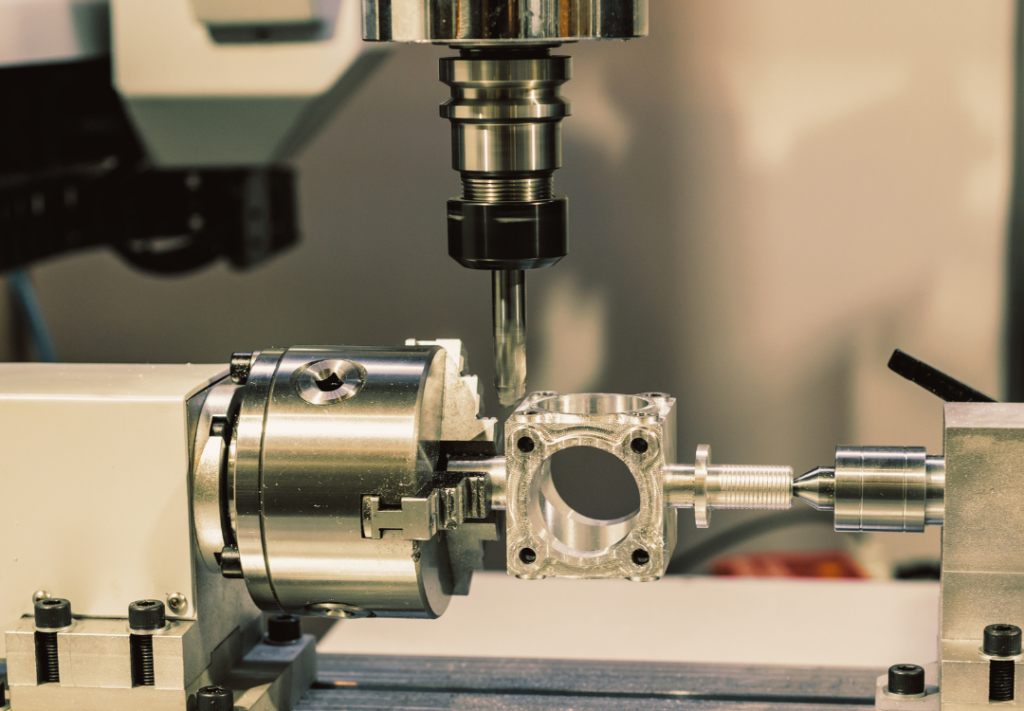
Stiffness:
CNC robots offer inherent flexibility with stiffness variations. CNC machines on the other end, offer dedicated functions of precision machining with restricted operations. Robots are more versatile and adaptable and can easily move from one task to another.
Future Horizons: The Interplay of CNC Machining and Robotic Technologies
CNC machining and robotic technologies are shaping a future where precision and automation intertwine to create innovation.
While CNC manufacturing robotics offer a range of capabilities, they are still catching up to the precision and speed achieved by modern CNC machines. Robots are incredibly adaptable and can be customised for different tasks. However, CNC machines excel in crafting specific component types with specialised expertise.
Despite this, CNC robots will continue to grow due to their versatility and efficiency.
Karkhana.io CNC Machining Services to aid your Robotic Components Manufacturing
Karkhana.io specialises in delivering top-notch CNC machining services tailored to the robotics industry. With a profound understanding of the unique demands of robotic components, we are committed to crafting precision parts that drive optimal performance.
Our CNC services expand into all kinds of materials, that include ABS, Aluminium, Brass, Nylon, PVC, Stainless Steel, Teflon, and Titanium.
Karkhana.io is your ultimate operating system for custom manufacturing, providing top-of-the-line CNC services including CNC milling, CNC turning, Electrical discharge machining, and Gear hobbing services.
If you’re looking for a robotics components manufacturer that meets the technical capabilities whilst incorporating quality control systems, contact us today! Optimise your operations with Karkhana.io‘s expertise in manufacturing high performance components that meet industry standards.
Let us help you reach the optimal outcome for all your manufacturing requirements. To get started, simply email Alay Shah on alay@karkhana.io with your specifications or fill out the form below.










